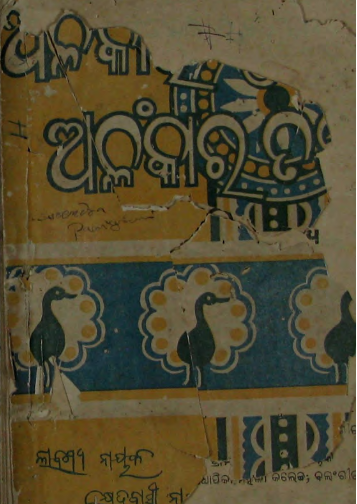In the landscape of Odia literature and linguistics, Alankara O Alankara Tattwa, a seminal work published in 1968 by Kshetrabasi Naik and Labanya Naik, stands out as a significant contribution to the study of grammar and rhetorical devices. This comprehensive volume explores the nuances of Odia grammar while shining a light on the beauty of stylistic expressions, known as alankara, that enrich the language.
At its core, Alankara O Alankara Tattwa endeavors to provide readers with a deep understanding of the grammatical structure of the Odia language. The authors, both esteemed scholars with a profound understanding of linguistics, have meticulously compiled a wealth of information that caters to students, educators, and language aficionados. The book serves as an invaluable resource for mastering the complexities of Odia grammar, making it a staple in academic circles.
One of the book’s key features is its structured approach to grammar. Naik and Naik systematically address various grammatical components, including syntax, morphology, and semantics. Each section is crafted with clarity in mind, breaking down intricate concepts into digestible units. This organized presentation allows learners to progressively grasp the essential building blocks of the Odia language, fostering a solid foundation for further exploration.
Beyond the foundational aspects of grammar, the heart of Alankara O Alankara Tattwa lies in its exploration of alankara or rhetorical devices. The authors provide an in-depth look at the different figures of speech that adorn Odia poetry and prose, such as simile, metaphor, personification, and more. By understanding these devices, readers can appreciate the aesthetic quality of the language and the skill involved in crafting compelling literary works. This artistic dimension challenges learners to think creatively and encourages them to incorporate these devices into their own writing.
The inclusion of examples from classic and contemporary Odia literature serves as a significant strength of this work. Naik and Naik have carefully curated a selection of excerpts that illustrate the application of grammatical concepts and alankara. These examples not only illuminate the theory presented in the book but also inspire readers to engage with Odia literature in a meaningful way. Through these literary samples, learners can witness firsthand how grammar and rhetoric come together to create impactful narratives and poetry.
An additional highlight of Alankara O Alankara Tattwa is its pedagogical approach. The authors incorporate exercises and activities that challenge readers to apply what they have learned, making the learning process interactive and enjoyable. This hands-on approach encourages students to think critically and develop their language skills while actively engaging with the material. The thoughtful design of the book ensures that it is suitable for learners at various levels, enhancing its accessibility and appeal.
In a broader context, Alankara O Alankara Tattwa plays a crucial role in promoting the Odia language and literature. By illustrating the richness of Odia grammar and rhetorical devices, Naik and Naik’s work contributes to the preservation and appreciation of the language, encouraging new generations to explore its depths. The book acts as a bridge connecting the past and present, inspiring a love for the language that is essential for its future growth.
Books Info
| Books name | Alankara O Alankara Tattwa / ଅଳଙ୍କାର ଓ ଅଳଙ୍କାର ତତ୍ତ୍ୱ |
| Author | Kshetrabasi Naik and Labanya Naik |
| No Of pages | 182 |
| Publisher | NA |
| Publication | 1968 |
| Printed At | NA |
| Distributor | NA |

